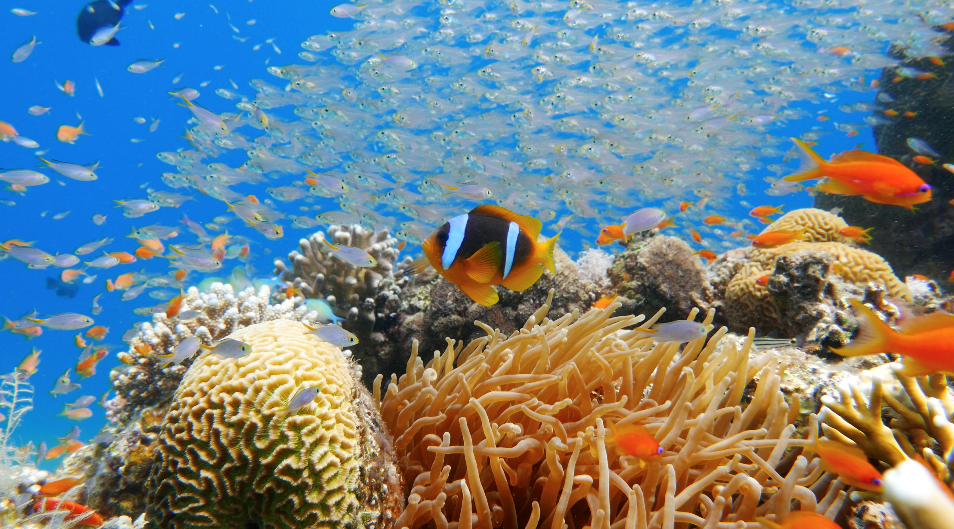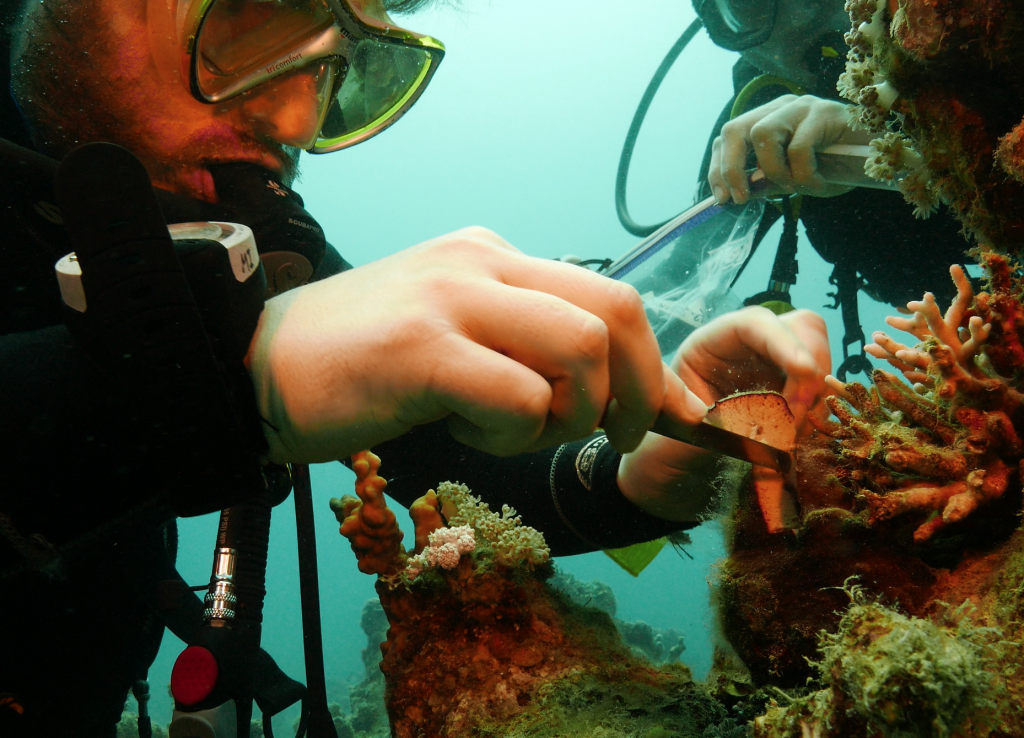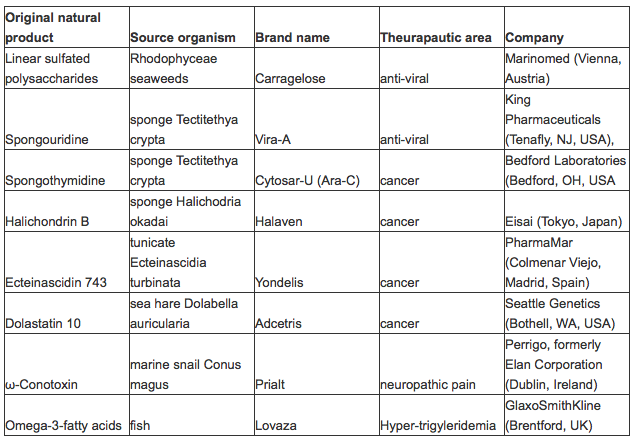By Markus Schmidt
published on nature.com on 22.06.2015
Although marine organisms are known as a source of bioactive compounds with pharmaceutical applications such as antibiotics, antivirals, analgetics, immunomodulatory-, antitumor-, anti-inflammatory-, antiallergenic compounds, their potential still remains largely unexplored. Synthetic biology, in combination with a better ecological understanding, has the potential to discover and design useful compounds not only for pharma but also for cosmetics, cosmeceuticals, nutriceuticals or pesticides.
Since the origin of life the marine environment has been the cradle of a vast diversity of molecules, genes, species, and ecosystems. Two thirds of our planet’s surface is covered by the sea which provides numerous ecosystem services such as seafood, minerals, climate regulation, recreation, genetic and medical resources. In terms of biodiversity, among the 34 phyla of life on Earth, 32 occur in the sea, enabling a complex and vibrant – in many ways still not fully understood – ecological system.

Figure 1: Coral reefs hold the key to a huge number of powerful pharmaceuticals. (© Markus Schmidt 2015, Israel)
Given the richness of marine biodiversity it is striking that the exploration of marine natural resources for biotechnology has started relatively late and only a few end products have hit the market (see table 1). In the 1950s the compounds spongothymidine and spongouridine were discovered from the marine sponge Tectitethya crypta[1] which eventually led to the development of semi-synthetic compounds Ara-C used against leukaemia and Ara-A for treating viral infections (FDA approval 1969/1976). It then took another 30 years for the next marine natural product ziconotide from cone snail (brand name Prialt©: Perrigo, Ireland) to be approved in 2004 followed by trabectedin (Yondelis©: Pharmamar, Spain) in 2007. The case of trabectedin shows very well the challenges for the marine product pipeline. Already in the 1950s an anti-tumor activity was found in the extracts of the sea squirt Ecteinascidia turbinata[2]. Given that enormous amounts of these small animals would have been needed for clinical trials (about 5 tons to produce 5 grams), the natural production of the extract was a huge problem. Since collecting the small sea squirts was not an option in the 1990s Pharmamar tried to set up underwater farms for the sea squirt, an undertaking that unfortunately turned out to be unsuccessful. In the end a synthetic chemist managed to develop a (semi)-synthetic production method to produce the compound in larger quantities, eventually making it through clinical trials. Trabectedin has now been approved for use in 55+ countries worldwide.
With the combined tools of genomics, systems and synthetic biology, together with a better understanding of the microbial ecologies, there are now hopes to better manage the production of these interesting compounds in-vivo and speed up the time needed to get to the market. One of the first cases where these powerful tools are applied is related to the sponge Theonella swinhoei[3]. Researchers found out that extracts of this sponge contain an impressive number of unmatched and highly potent molecules. Further studies revealed that it was not the sponge itself but its vast microbiome, in particular a newly described bacteria named Entotheonella sp., that is responsible[4] for a large and distinct metabolic repertoire, including the distinctive so-called proteusins (polytheonamides), cyclotheonamides, or onnamides. Neither Theonella nor Entotheonella however can be cultivated, so researchers are now trying to identify the metabolic pathways in order to engineer them into industrial microbial strains (see figure 2).

Figure 2: Researchers from Tel Aviv University[5] who collaborate with the European SYNPEPTIDE project collect sponge samples in Eilat, Israel. (© Markus Schmidt 2015, Israel)
While, according to a recent EC study on marine knowledge 2020[6], “the marine biotechnology sector in Europe is still in its infancy, characterised by small companies principally focused on R&D”, improvements in detecting and harvesting marine natural products are already reflected in expectations of the global market. While in 2011 the global market for marine-derived drugs was $US 4.8 billion, it is forecasted to reach $US 8.6 billion in 2016 at a compound annual growth rate of 12.5 % for the five-year period of 2011 to 2016[7]. With the recent implementation of the UN Nagoya Protocol[8] on access and benefit sharing, some of the revenues might be shared with biodiverse coral reef harbouring countries, providing them a monetary incentive to safeguard their marine ecosystems. But it is not only the expected financial benefit that drives the marine biotech innovation process. The global challenge of ever increasing antibiotic resistance in pathogens, for example, led the WHO and several governments to call for targeted R&D efforts. Since entire classes of antibiotics (and powerful molecular machineries to produce them) could be found in just a few marine samples there are now serious efforts underway (the European project SYNPEPTIDE[9]) to identify, transfer and re-engineer interesting genetic circuits to other microbial production platforms.
Table 1: Overview of approved marine drugs on the market (Source[10])

Further reading: Se-Kwon Kim (ed.) 2015. Handbook of Anticancer Drugs from Marine Origin. Springer. DOI 10.1007/978-3-319-07145-9
[1] http://www.marinespecies.org/aphia.php?p=taxdetails&id=170927
[2] http://www.marinespecies.org/aphia.php?p=taxdetails&id=103756
[3] http://www.marinespecies.org/aphia.php?p=taxdetails&id=171264
[4] http://www.nature.com/nature/journal/v506/n7486/full/nature12959.html
[5] http://milan35.wix.com/tau-porifera#!research/c1a9w
[6] https://webgate.ec.europa.eu/maritimeforum/sites/maritimeforum/files/Marine%20Knowledge%20IA%20Study_Final%20report_17-06-2013_from_doc.pdf
[7] http://www.bccresearch.com/market-research/pharmaceuticals/marine-derived-pharma-markets-phm101a.html
[10] Source: Martins et al. 2014. Marketed Marine Natural Products in the Pharmaceutical and Cosmeceutical Industries: Tips for Success. Mar. Drugs 2014, 12, 1066-1101; doi:10.3390/md12021066